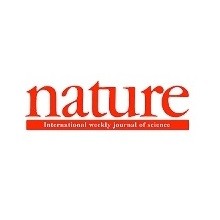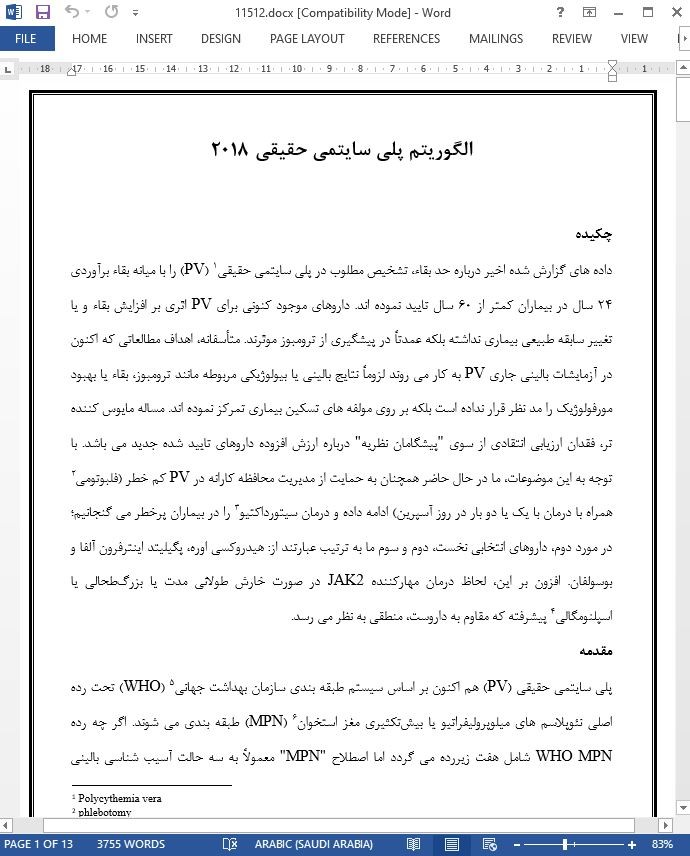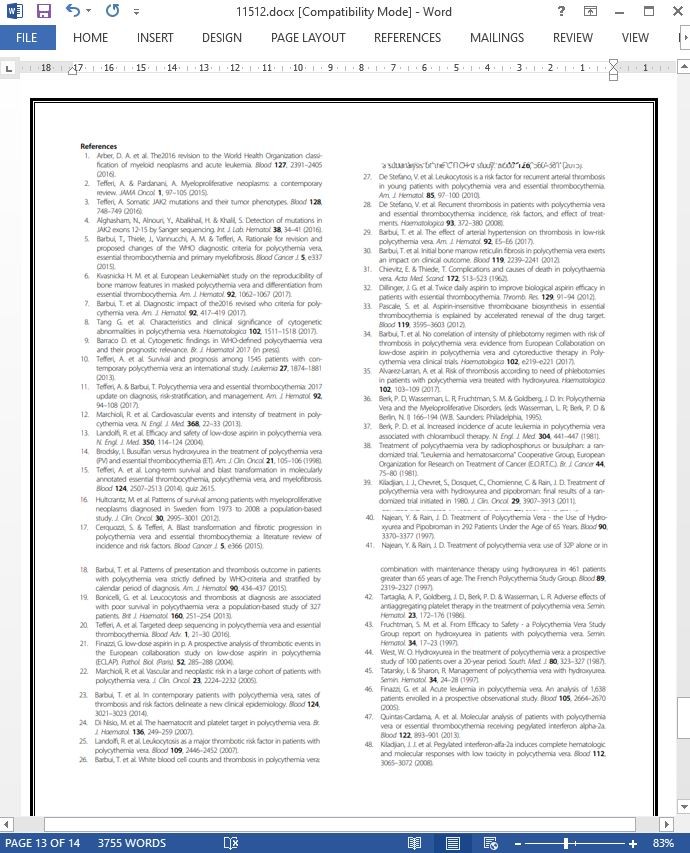
الگوریتم پلیسیتمی حقیقی 2018
چکیده
داده های گزارش شده اخیر درباره حد بقاء، تشخیص مطلوب در پلی سایتمی حقیقی (PV) را با میانه بقاء برآوردی 24 سال در بيماران کمتر از 60 سال تایید نموده اند. داروهای موجود کنونی برای PV اثری بر افزایش بقاء و یا تغییر سابقه طبیعی بیماری نداشته بلکه عمدتاً در پیشگیری از ترومبوز موثرند. متأسفانه، اهداف مطالعاتی که اکنون در آزمایشات بالینی جاری PV به کار می روند لزوماً نتایج بالینی یا بیولوژیکی مربوطه مانند ترومبوز، بقاء یا بهبود مورفولوژیک را مد نظر قرار نداده است بلکه بر روی مولفه های تسکین بیماری تمرکز نموده اند. مساله مایوس کننده تر، فقدان ارزیابی انتقادی از سوی "پیشگامان نظریه" درباره ارزش افزوده داروهای تایید شده جدید می باشد. با توجه به این موضوعات، ما در حال حاضر همچنان به حمایت از مدیریت محافظه کارانه در PV کم خطر (فلبوتومی همراه با درمان با یک یا دو بار در روز آسپرین) ادامه داده و درمان سیتورداکتیو را در بیماران پرخطر می گنجانیم؛ در مورد دوم، داروهای انتخابی نخست، دوم و سوم ما به ترتیب عبارتند از: هیدروکسی اوره، پگیلیتد اینترفرون آلفا و بوسولفان. افزون بر این، لحاظ درمان مهارکننده JAK2 در صورت خارش طولانی مدت یا بزرگطحالی یا اسپلنومگالی پیشرفته که مقاوم به داروست، منطقی به نظر می رسد.
مقدمه
پلی سایتمی حقیقی (PV) هم اکنون بر اساس سیستم طبقه بندی سازمان بهداشت جهانی (WHO) تحت رده اصلی نئوپلاسم های میلوپرولیفراتیو یا بیشتکثیری مغز استخوان (MPN) طبقه بندی می شوند. اگر چه رده WHO MPN شامل هفت زیررده می گردد اما اصطلاح "MPN" معمولاً به سه حالت آسیب شناسی بالینی حاصل از جهش JAK2: PV، ترومبوسایتمی اساسی (ET) و میلوفیبروز اولیه (PMF) اطلاق می شود. پلی سایتمی حقیقی (PV) و بیماری های خواهری آن، تکثیر میلوم کلونال حاصل از سلول های بنیادی محسوب می گردند که با سه جهش محرک منحصر به فرد متقابل: JAK2، CALR و MPL با فراوانی توزیع مربوطه 99~، 0 و 0٪ برای PV، 55، 22 و 3٪ برای ET و 65، 20 و 7٪ برای PMF مشخص شده اند. فراوان ترین جهش JAK2 مرتبط با MPN، اکسون JAK2V617F 14 است که مسئول تقریباً کلیه جهش های JAK2 در ET و PMF و 97٪ جهش های مشاهده شده در PV محسوب می گردد؛ 3٪ جهش باقیمانده JAK2 در PV در میان اکسون های 12، 13، و 14 پراکنده است.
نتیجه گیری
بیماران مبتلا به PV باید چشم انتظار زندگی سازنده و طولانی داشته و از مواجهه با داروهای جدیدی که عواقب درازمدت آن ها نامشخص بوده و ممکن است شتاب دهنده تخریب کلونال به سوی لوسمی میلوئید حاد و یا میلوفیبروز باشد، اجتناب نمایند. این مساله تنها دغدغه نظری نبوده و پیش از درمان بیماران مبتلا به PV با کلرامبوسیل، رادیوفسفر یا پیپوبرومن و درمان بیماران مبتلا به ET با آناگرلید روی می دهد. دهه ها تجربه با هیدروکسی اوره و بوسولفان، برای درمان PV یا ET، شواهد کنترل شده ای را ایجاد ننموده که نشان دهد یکی از این دو دارو لوسمیزا یا سرکوب کننده ایمنی هستند.
Abstract
Recently reported mature survival data have confirmed the favorable prognosis in polycythemia vera (PV), with an estimated median survival of 24 years, in patients younger than age 60 years old. Currently available drugs for PV have not been shown to prolong survival or alter the natural history of the disease and are instead indicated primarily for prevention of thrombosis. Unfortunately, study endpoints that are being utilized in currently ongoing clinical trials in PV do not necessarily target clinically or biologically relevant outcomes, such as thrombosis, survival, or morphologic remission, and are instead focused on components of disease palliation. Even more discouraging has been the lack of critical appraisal from “opinion leaders”, on the added value of newly approved drugs. Keeping these issues in mind, at present, we continue to advocate conservative management in low-risk PV (phlebotomy combined with once- or twice-daily aspirin therapy) and include cytoreductive therapy in “high-risk” patients; in the latter regard, our first, second, and third line drugs of choice are hydroxyurea, pegylated interferon-α and busulfan, respectively. In addition, it is reasonable to consider JAK2 inhibitor therapy, in the presence of protracted pruritus or markedly enlarged splenomegaly shown to be refractory to the aforementioned drugs.
Introduction
Polycythemia vera (PV) is currently classified by the World Health Organization (WHO) classification system under the major category of myeloproliferative neoplasms (MPN)1 . Although the WHO MPN category includes seven subcategories, the term “MPN” usually refers to the three JAK2 mutation-enriched clinicopathologic entities: PV, essential thrombocythemia (ET) and primary myelofibrosis (PMF) 1 . PV and its sister diseases constitute stem cell-derived clonal myeloproliferation that is characterized by three mutually-exclusive “driver” mutations: JAK2, CALR, and MPL, with respective distribution frequency of ~99, 0, and 0% for PV, 55, 22, and 3% for ET and 65, 20 and 7% for PMF2 . The most frequent MPN-associated JAK2 mutation is the exon 14 JAK2V617F, which is responsible for almost all the JAK2 mutations in ET and PMF, and 97% of those seen in PV; the remainder 3% of JAK2 mutations in PV are spread across exons 12, 13, and 14 3,4
Conclusions
Patients with PV should look forward to long and productive life and avoid exposure to new drugs whose long-term consequences are not known and might include acceleration of clonal degeneration into acute myeloid leukemia or myelofibrosis. This is not only of theoretical concern and has happened before to PV patients treated with chlorambucil, radiophosphorus or pipobroman37,39 and to ET patients treated with anagrelide76 . Decades of experience with hydroxyurea and busulfan, for the treatment of PV or ET, has not produced controlled evidence that implicates either one of these two drugs as being leukemogenic or immunosuppressive.
چکیده
مقدمه
نرخ بقا و عوارض
عوامل خطرساز برای بقا و پیش بینی کننده های پیشرفت لوسمی یا فیبروتیک
بروز ترومبوز و خونریزی
عوامل خطرساز برای ترومبوز و دسته بندی خطر فعلی
درمان متناسب با خطر
درمان متناسب با خطر: بیماری پرخطر
گزینه های درمان برای بیماری تحمل ناپذیر یا مقاوم نسبت به هیدروکسی اوره
مدیریت خارش
مدیریت در دوران بارداری
نتیجه گیری
Abstract
Introduction
Risk-adapted treatment algorithm in polycythemia vera
Survival and complications rates
Risk factors for survival and predictors of leukemic or fibrotic progression
Incidence of thrombosis and bleeding
Risk factors for thrombosis and current risk stratification
Risk-adapted therapy: low-risk disease
Risk-adapted therapy: high-risk disease
Treatment options for hydroxyurea intolerant or refractory disease
Management of pruritus
Management during pregnancy
Conclusions
- اصل مقاله انگلیسی با فرمت ورد (word) با قابلیت ویرایش
- ترجمه فارسی مقاله با فرمت ورد (word) با قابلیت ویرایش، بدون آرم سایت ای ترجمه
- ترجمه فارسی مقاله با فرمت pdf، بدون آرم سایت ای ترجمه



